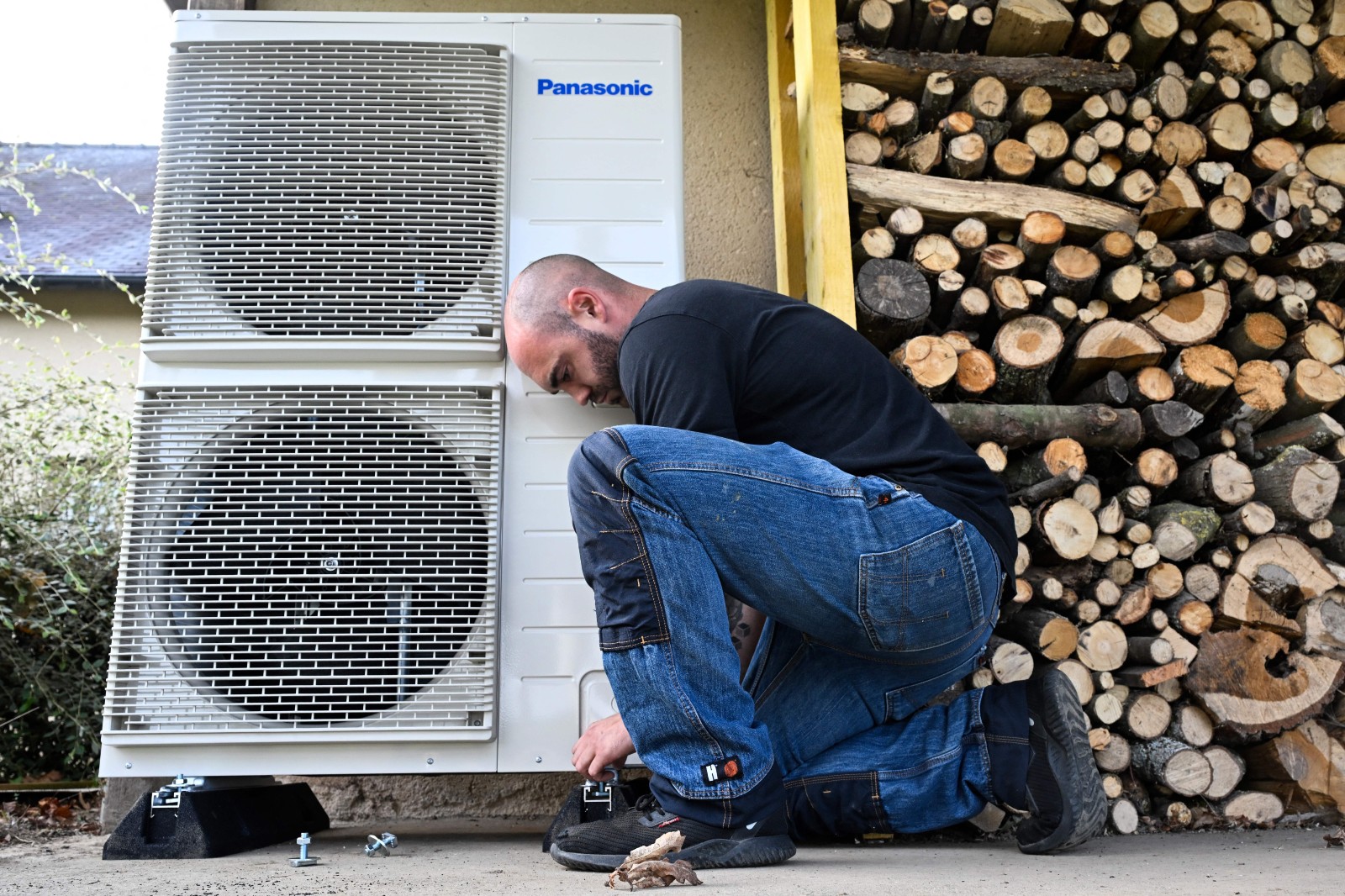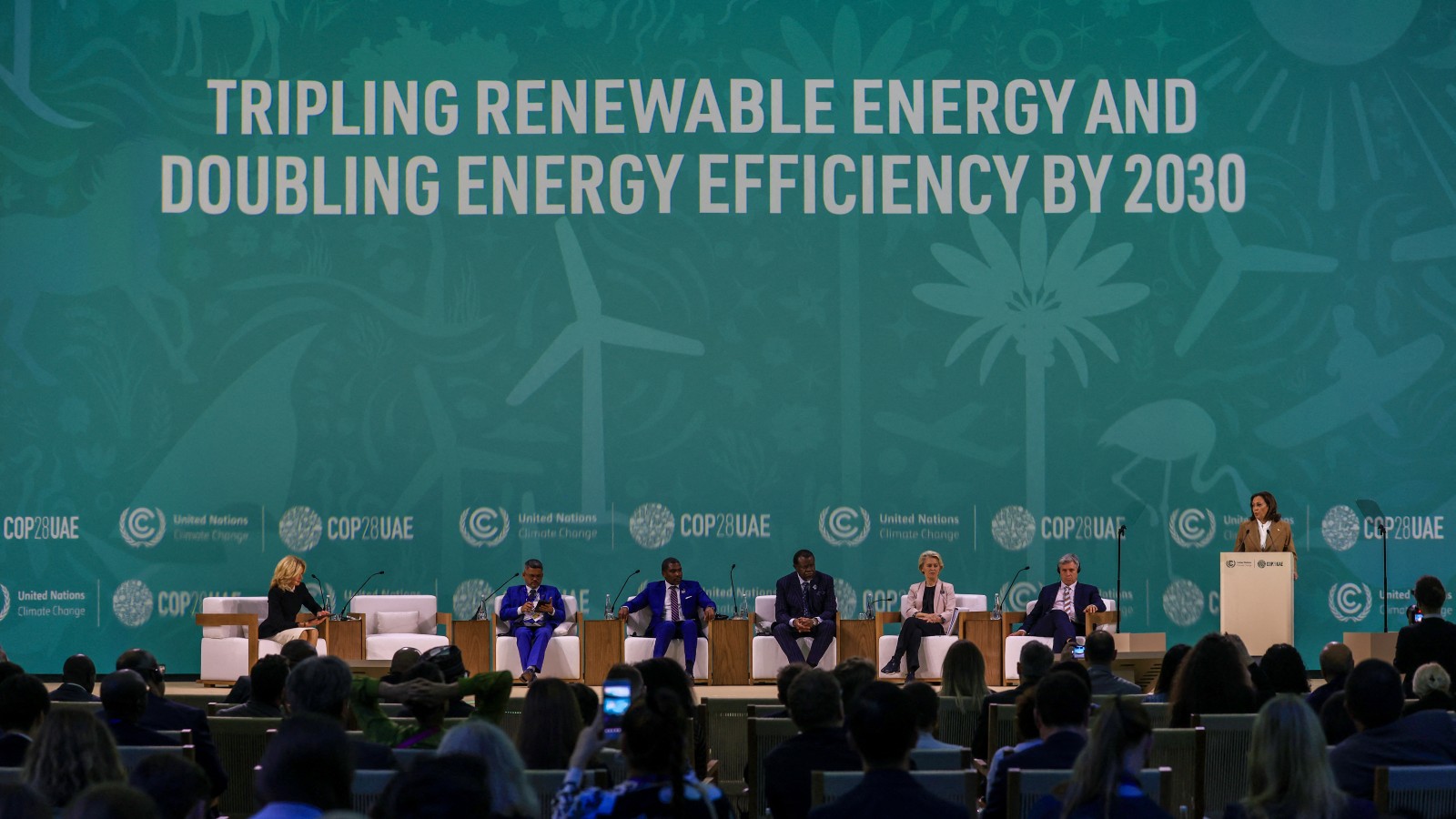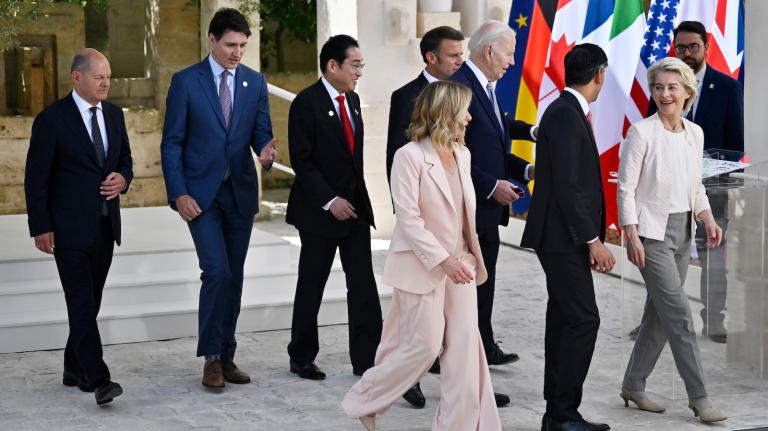This weekend, 118 countries at the COP28 climate summit pledged to triple the world’s renewable power capacity and double the pace of energy efficiency improvements by 2030. The deal echoed a recent report by the International Energy Agency, or IEA, which named those targets as essential to limiting global warming to 1.5 degrees Celsius (2.7 degrees Fahrenheit). Now, delegates are calling for the same commitments to be included in the conference’s final decision, which will summarize the actions countries plan to take to address the climate crisis.
Energy experts told Grist that the pledge is a sign that energy efficiency, a relatively overlooked climate solution, is gaining momentum on the global stage. Compared to tripling renewables, energy efficiency — which the IEA defines as using less energy to achieve the same economic output — received far less attention leading up to this year’s conference. A recent climate deal between the U.S. and China, for example, didn’t mention doubling energy efficiency improvements, while a G20 statement from September only “take[s] note” of the target.
Yet according to the IEA, doubling the annual pace of energy efficiency progress would achieve 50 percent of the emissions reductions needed by 2030. That makes it the single largest measure toward capping warming at 1.5 degrees C. Reaching that goal would require shifting billions of cooking stoves off wood and coal to lower-emission fuels, reducing energy demand and consumption, and setting stricter appliance standards. This last target is especially essential as demand for air conditioning soars globally in the face of record-high heat.
Energy efficiency “doesn’t get nearly the focus it needs,” said Steven Nadel, executive director of the American Council for an Energy-Efficient Economy, a nonprofit research organization. “Efficiency and renewables should be like peanut butter and jelly. It’s hard to imagine one without the other.”
James Newcomb, a senior expert at the clean energy nonprofit RMI, said he’s not surprised that policymakers sometimes neglect energy efficiency. One reason could be human nature: People have a tendency to solve problems by adding stuff, rather than cutting back. This “additive bias,” as scientists call it, could make policymakers lean toward building large solar and wind farms instead of cutting back on energy use.
Another factor is that projects like renewable power plants create “concentrated pools of profits,” Newcomb said, making their benefits easily quantifiable. They’re also backed by industry groups. Energy efficiency measures, on the other hand, are implemented in a wide range of sectors, from buildings to transportation to appliances, and their benefits are far more distributed.

According to the IEA, global energy efficiency improved by about 2 percent in 2022. Doubling that means the world’s efficiency progress needs to hit an annual rate of 4 percent by 2030. So far, it’s heading in the wrong direction, with an estimated improvement of 1.3 percent in 2023.
To achieve the 4 percent annual goal, Nadel and other energy efficiency experts say that countries need to implement stronger building codes and retrofitting initiatives to equip buildings with better insulation, LED lighting, and more efficient water heaters. Newcomb said governments should also implement more efficient building designs to use less steel, concrete, and other materials in construction. Countries also need to scale up the adoption of electric vehicles, heat pumps, and other electric appliances, which use far less energy than their fossil fuel-powered counterparts. EVs are two to four times more efficient than traditional combustion engine cars, while heat pumps are up to five times more efficient than oil and gas boilers.
The IEA also calls for $8 billion in annual investments to expand developing countries’ access to “clean cooking,” which refers to cookstoves that use lower-emission energy sources like liquefied petroleum gas, electricity, and ethanol instead of traditional fuels like wood, coal, and kerosene. According to the agency, almost 2.3 billion people in 130 countries, primarily in Asia and sub-Saharan Africa, lack access to clean cooking.
Another essential strategy is creating stricter efficiency standards for home appliances, vehicles, and other devices. Those standards are particularly important as global demand for air conditioning is projected to more than triple by 2050. As heat waves intensify as a result of climate change, access to air conditioning is increasingly a life-or-death matter. Yet most air conditioning units sold today, Newcomb said, do not use the most efficient technology possible due to cost constraints.
“Once purchased, these units stay in operation for years, sometimes decades,” said David Ripin, chief science officer at the Clinton Health Access Initiative, which is working to grow the market for energy-efficient ACs in low- and middle-income countries. “There is great urgency to make the most efficient units available with as little price premium as possible.”
All these energy efficiency measures will produce a slew of benefits, said Clara Camarasa, an energy efficiency policy analyst at the IEA. The agency’s analysis found that doubling the annual rate of energy efficiency progress would create 4.5 million jobs worldwide in building retrofitting, transportation, and other sectors, and potentially cut energy bills by a third in advanced economies like the U.S.
The IEA also singled out behavioral changes — like taking fewer flights, using more public transit, and using less energy for heating and cooling — as another way to reduce energy demand. Newcomb said it’s a reminder that managing energy consumption, alongside a build-out of renewables, is an essential part of reducing global emissions.
“Trying to solve everything through decarbonization, while going full-tilt with relentless increases in consumption, is really, really tough,” he said.




